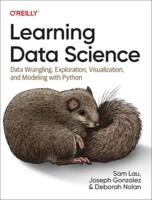Publisher's Synopsis
papers, illustrated with examples. They include wavelet bases, implicit functions de ned on a space grid, etc. It appears that a common pattern is the recovery of a controllable model of the scene, such that the resulting images can be edited (interaction). Changing the viewpoint is only one (important) aspect, but changing the lighting and action is equally important [2]. Recording and representing three-dimensional scenes is an emerging technology made possible by the convergence of optics, geometry and computer science, with many applications in the movie industry, and more generally in entertainment. Note that the invention of cinema (camera and projector) was also primarily a scienti c invention that evolved into an art form. We suspect the same thing will probably happen with 3-D movies. 3 Book Contents The book is composed of 12 chapters, which elaborate on the content of talks given at the BANFF workshop. The chapters are organized into three sections. The rst section presents an overview of the inter-relations between the art of cinemat- raphy and the science of image and geometry processing; the second section is devoted to recent developments in geometry; and the third section is devoted to recent developmentsin image processing. 3.1 3-D Cinematography and Applications The rst section of the book presents an overview of the inter-relations between the art of cinematography and the science of image and geometry processing.












